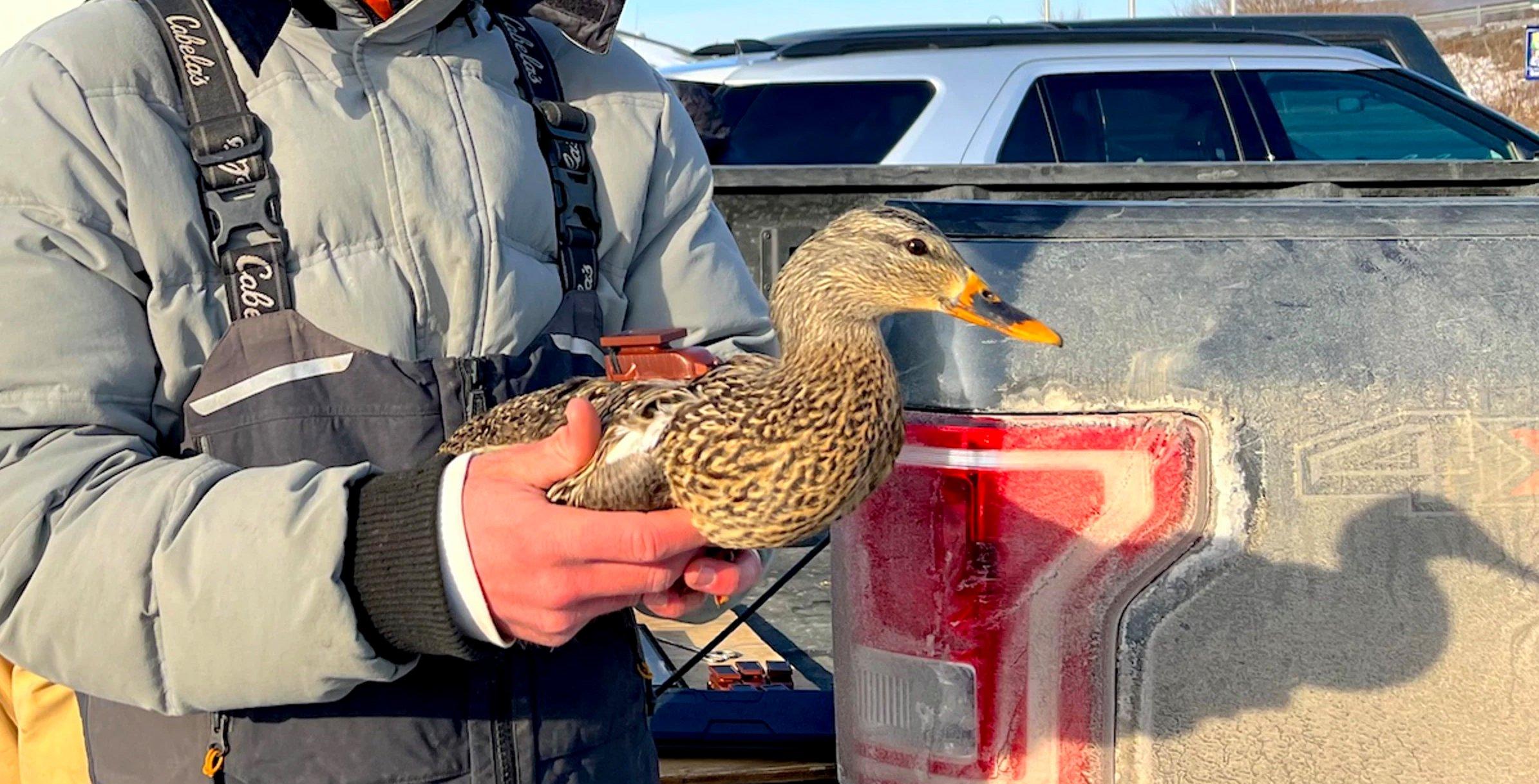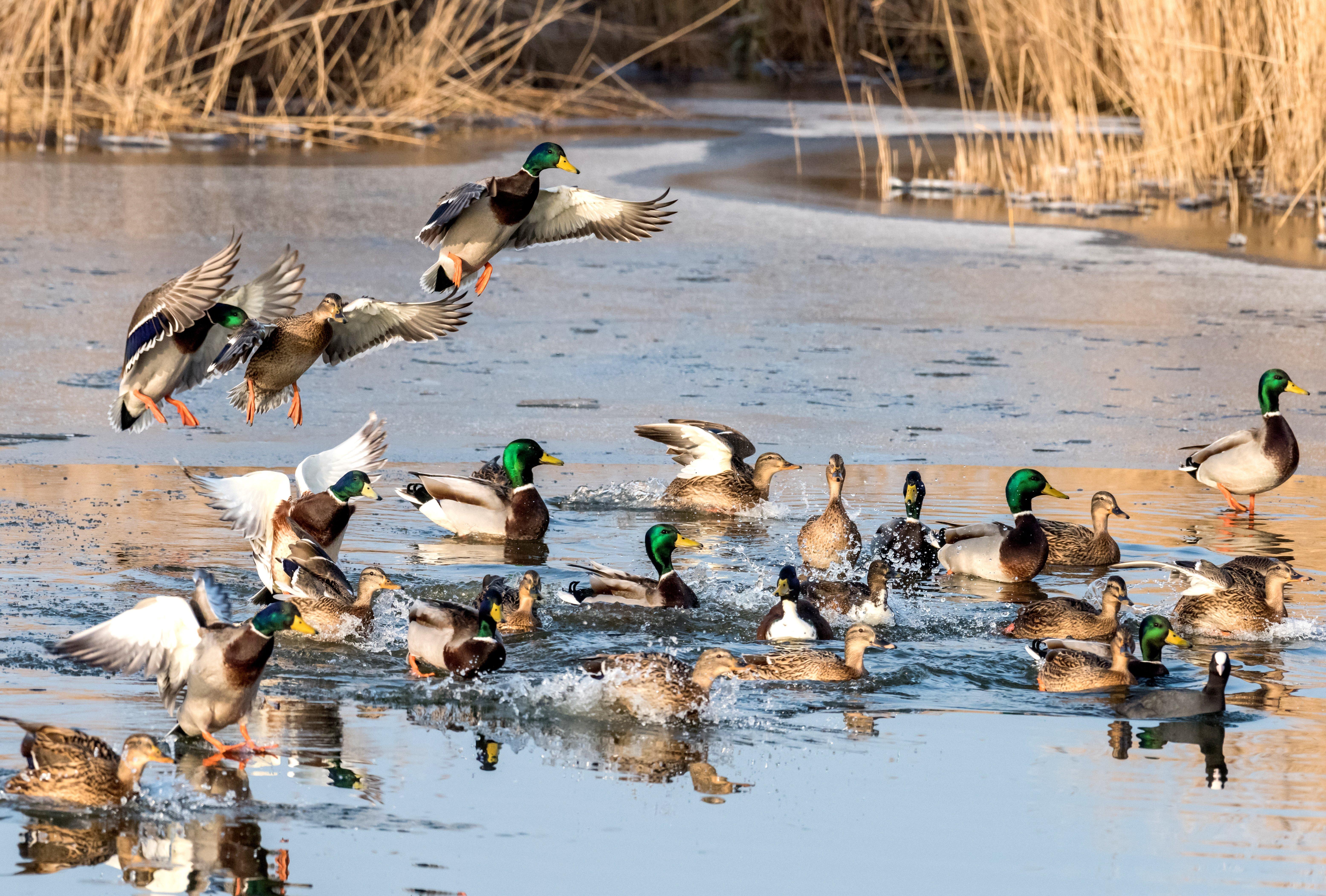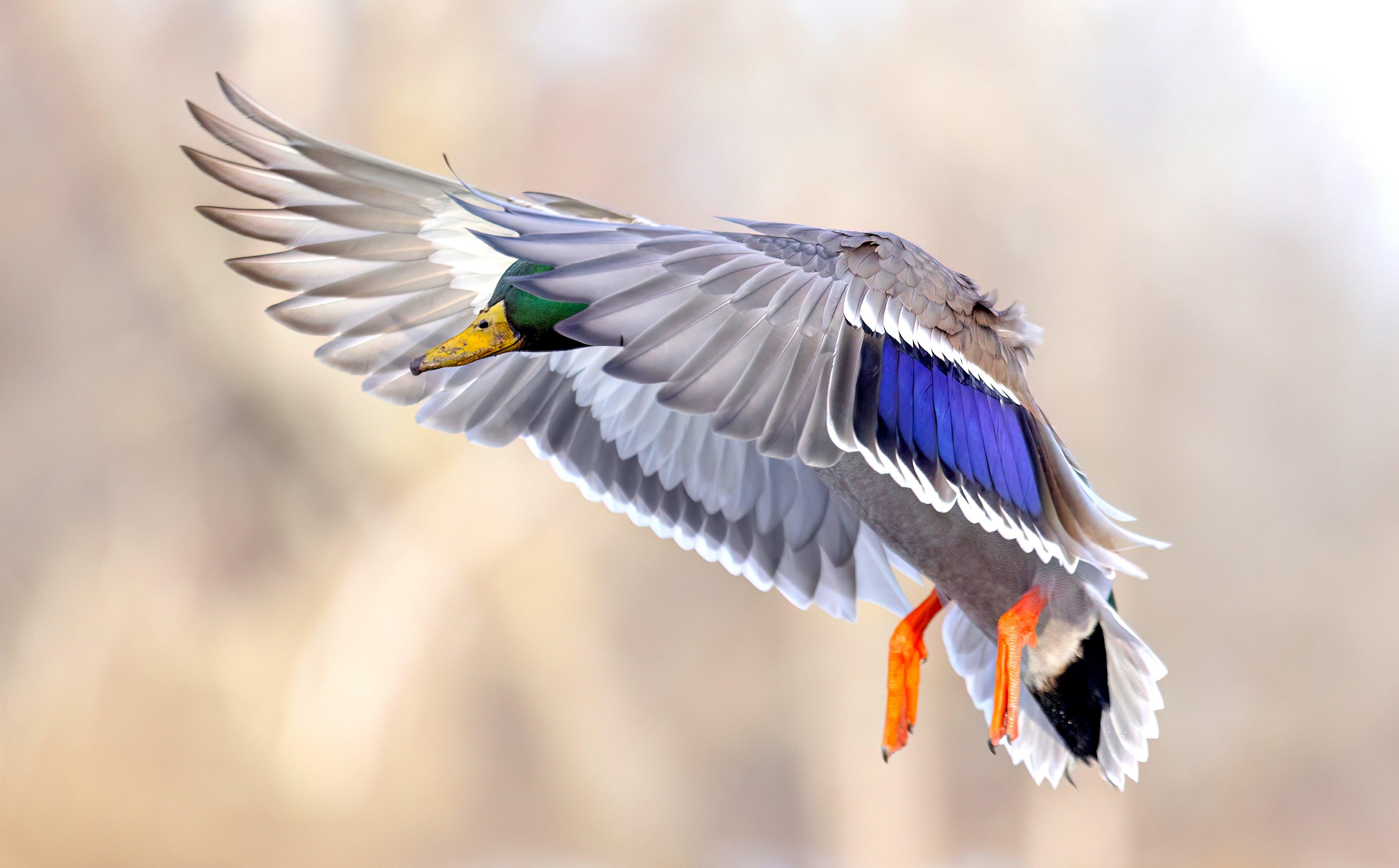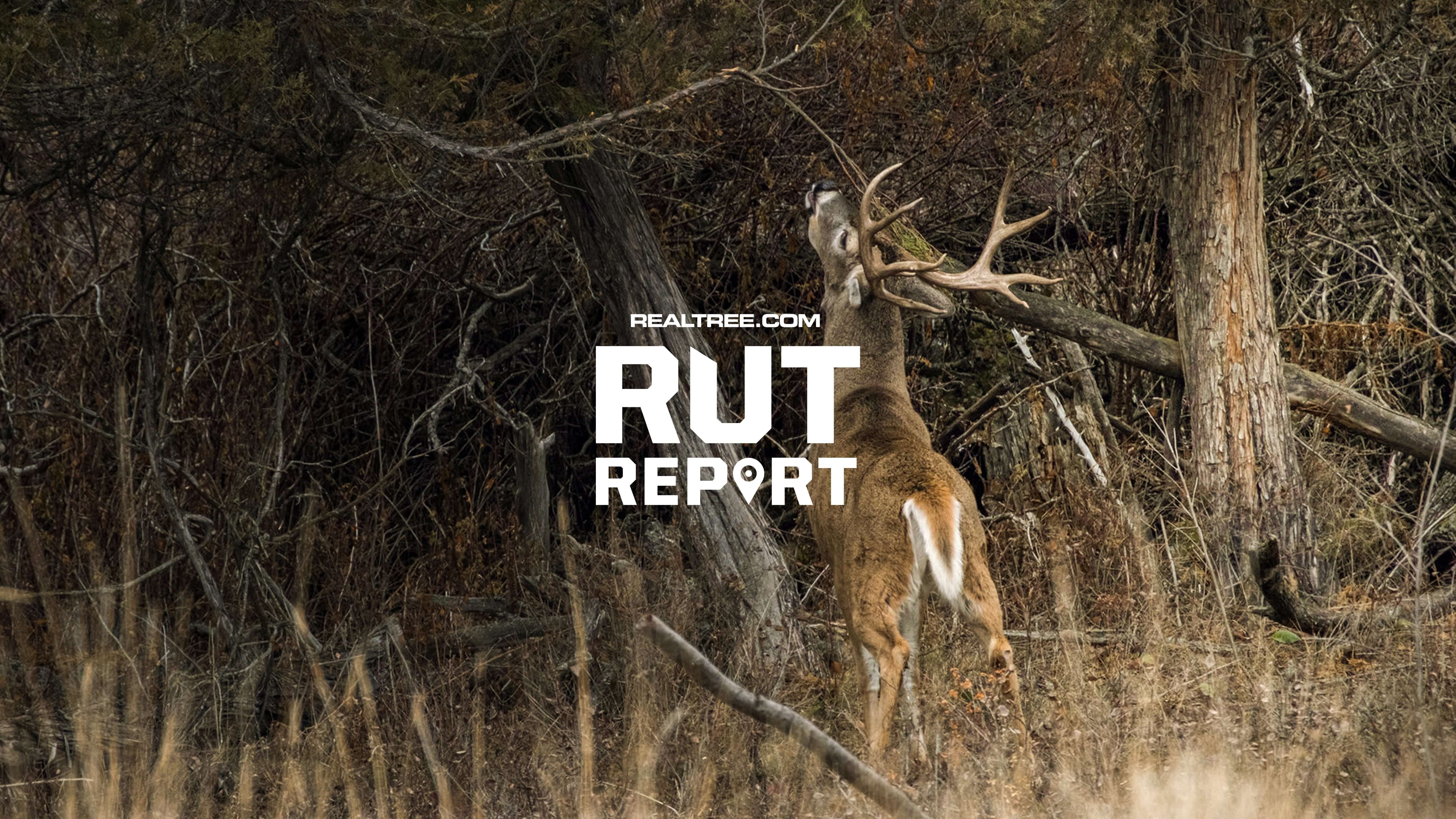Most duck hunters know that mallards use refuges to avoid hunting pressure, but modern telemetry studies are providing clues on how hunters might use rest areas to their advantage
Duck hunters have long known that cold weather puts birds on the move. However, recent telemetry studies reveal that’s not always the case for North America’s most abundant duck, the mallard. Greenheads, much like Canada geese, are a hardy species. Unlike some “calendar” duck species that migrate during a specific window of time each fall, snow cover and ice that cut off food supplies are the two main factors that will cause mallards to migrate south.

Recent telemetry studies show that mallards tend to resist migrating south for even longer than originally believed. Image by University of Saskatchewan
Since mallards are so tough, they typically migrate less and stay in one area for long periods. For example, mallards that breed in the Great Lakes don’t often leave their home range. This makes them more challenging to hunt because you’re chasing the same birds for the majority of duck season. Weather trends also factor in.
“It’s not so much the cold, but consistent changes in weather patterns that make ducks move,” said long-time Illinois hunter Randy Hill, who has pursued mallards across all four flyways for over 30 years. “Ducks, mallards in particular, aren’t going to fly much during shooting hours if it’s 70 degrees and sunny for a week straight. And if hunters pressure ducks too much, they may sit tight in extreme cold as well. But if you get a good mix of rain, snow, wind, sun, clouds, etc., over five to seven days, it takes ducks out of their comfort zone and makes them vulnerable.”

It takes consistent changes in weather patterns to push mallards south, not just cold. Image by Robert Ademi
Hunting pressure plays a role in mallard movement as well. Studies have shown that the more ducks are hunted, the less they frequent decoy spreads during a season, especially on public land where crowds of hunters gather. Hunters are well aware of how intelligent ducks become as the season progresses. Many birds stick to the safety of refuges where they cannot be shot, only flying out to feed after sunset as hunters pick up decoys.
Don’t Miss: 3 TIMES WHEN DUCK HUNTERS SHOULD PICK UP THE SPREAD AND MOVE
TELEMETRY STUDIES REVEAL MALLARD MOVEMENTS
Because they can fly, waterfowl are tricky to study. Most hunters are familiar with banding, but that only delivers two data points: where the bird was banded and where it was harvested, found, or recaptured. Modern telemetry affords scientists and biologists thousands of data points because the solar-powered units, which weigh around 15 to 20 grams, use cell phone tower signals to relay data.
Once a duck is captured and deployed with a GPS unit strapped to its back (the units can also be inserted into the body cavity), anytime it flies near an active cell tower, the data is offloaded and available to view on a computer or mobile device. The tracking units also have a built-in accelerometer to see when birds are flying, resting, feeding, or nesting.
MALLARD IQ
Two recent telemetry studies focused on mallard movements have revealed just how smart mallards are during hunting season. From 2019 to 2022, University of Arkansas-Monticello graduate student Ethan Dittmer fitted 105 mallards with transmitters after capturing the birds at four sites within Arkansas’s White River National Wildlife Refuge. Another ongoing study is being done in western Tennessee, where Ph.D. students Cory Highway, Nick Masto, and Abby Blake-Bradshaw, supervised by Dr. Brad Cohen at Tennessee Tech University, are conducting similar research.
Both areas are wintering waterfowl destinations, meaning most mallards will only fly farther south if the weather and lack of food force them to. Data from the studies revealed that mallards began to limit their movements once duck season was underway. After shooting hours, the birds left the safety of a public refuge (where hunting was not allowed), and flew to a private flooded agricultural field, where they would feed and spend the night. Then, before shooting light the following day, the mallards left the private land to go back to the refuge.

Arkansas and Tennessee studies show that mallards are reluctant to leave protected areas during shooting light in areas with high hunting pressure. Image by Catstyecam
“Our research is focused in one area and can’t be generalized until more studies are done. But if you look at our data, these ducks get in a pretty predictable pattern,” said Cohen. “They know when the safe times to move are.”
The mallards Dittmer deployed rarely used any of Arkansas’s public hunting areas —during the day or at night — until duck season was over. Most of the birds also stayed near the White River NWR regardless of the weather. Only two of the 105 traveled farther south than Arkansas.
“When hunting season was on, those mallards were either in the sanctuary (refuge) or private agriculture, normally flooded rice,” Dittmer said. “But about two weeks after hunting season ended, during the daytime, they preferred public hunt areas over sanctuaries (mostly flooded timber) and private lands. It was evident that once hunting season ended, mallards started using these formerly risky areas. Presumably, they somehow knew it was safe.”
MANAGING PRESSURE WITH SANCTUARIES
One of the many benefits of state and National Wildlife Refuges is that they can hold large numbers of migrating ducks in one place during hunting season. More ducks in the area should equate to more opportunities for hunters. But these resting areas can also work against hunters because birds know they are safe on those sanctuaries, which means many will not move during shooting hours unless there is a change in the weather.
“A mallard will fly a couple of miles from the refuge, look around, and then fly back to the refuge because they know it’s the only safe place to go,” Cohen said. “Another part of our study will be working with private landowners to introduce smaller sanctuaries on their properties, to designate an area they do not disturb and never hunt.”

Providing non-hunted “safe zones” inside hunted areas can help to attract and hold mallards in an area. Image by Jim Cumming
Presumably, if ducks have more “safe zones” on public and private land where they are not hunted it will encourage them to fly more freely instead of sitting on a refuge until after sunset. It’s a concept that has worked for decades in north-central Missouri. Swan Lake NWR and Fountain Grove Conservation Area are only five miles apart. Fifty miles south are the Missouri River and Grand Pass Conservation Area, arguably one of the best public hunting venues in the state.
CHECK OUT OUR LATEST CAMO PATTERN: REALTREE APX
Interspersed between those public waters are dozens of private duck farms, including well-known outfitter Habitat Flats, which creates several small refuges for ducks to rest. Other landowners in this area also dedicate portions of their farms to resting ducks, never hunting in those locations.
“We hunt a lot of ducks that are here all season, which is why we try and leave them alone the best we can,” said Ira McCauley, a co-owner of Habitat Flats. “We created holes (wetlands) under flight lines so ducks don’t get as pressured.”
Managing pressure is a critical component of hunting success. Both the Dittmer and Cohen Lab studies have shown that for survival, mallards gather on large public refuges move less once the hunting season starts. The Cohen study purposely disturbed resting ducks by running a boat through a refuge (and in a variety of other ways), but the birds would not leave. They circled above the refuge and sat back down once the commotion ended.
“If you can make more sanctuaries for ducks, that should get them moving…and make it easier to shoot them,” Cohen said. “Hunters have constrained ducks and so they know that either ‘I need to move as little as possible or I die.’ Successful hunters realize this and understand that you must sacrifice hunt days for hunt quality.”












